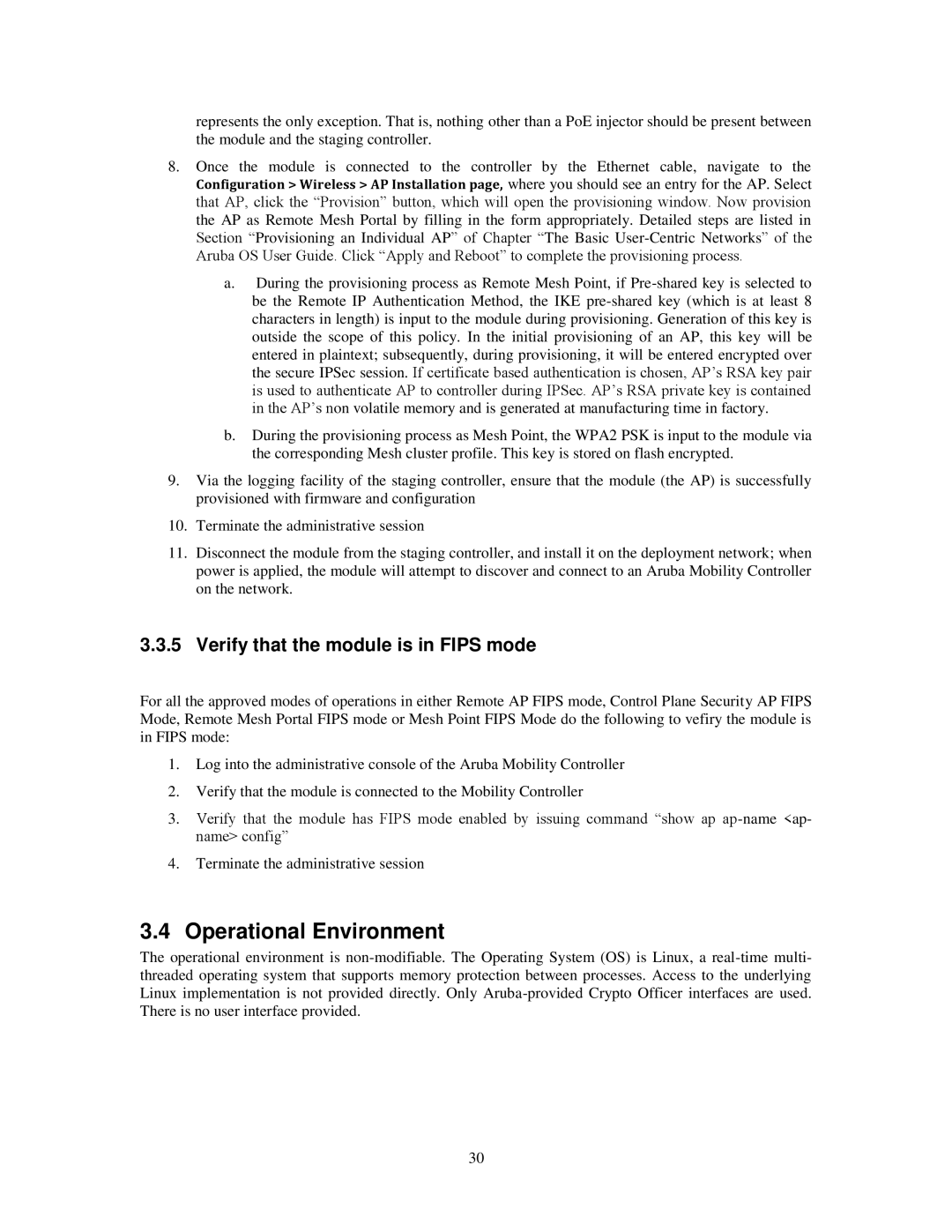represents the only exception. That is, nothing other than a PoE injector should be present between the module and the staging controller.
8.Once the module is connected to the controller by the Ethernet cable, navigate to the
Configuration > Wireless > AP Installation page, where you should see an entry for the AP. Select that AP, click the “Provision” button, which will open the provisioning window. Now provision the AP as Remote Mesh Portal by filling in the form appropriately. Detailed steps are listed in Section “Provisioning an Individual AP” of Chapter “The Basic
a.During the provisioning process as Remote Mesh Point, if
b.During the provisioning process as Mesh Point, the WPA2 PSK is input to the module via the corresponding Mesh cluster profile. This key is stored on flash encrypted.
9.Via the logging facility of the staging controller, ensure that the module (the AP) is successfully provisioned with firmware and configuration
10.Terminate the administrative session
11.Disconnect the module from the staging controller, and install it on the deployment network; when power is applied, the module will attempt to discover and connect to an Aruba Mobility Controller on the network.
3.3.5 Verify that the module is in FIPS mode
For all the approved modes of operations in either Remote AP FIPS mode, Control Plane Security AP FIPS Mode, Remote Mesh Portal FIPS mode or Mesh Point FIPS Mode do the following to vefiry the module is in FIPS mode:
1.Log into the administrative console of the Aruba Mobility Controller
2.Verify that the module is connected to the Mobility Controller
3.Verify that the module has FIPS mode enabled by issuing command “show ap
4.Terminate the administrative session
3.4Operational Environment
The operational environment is
30
